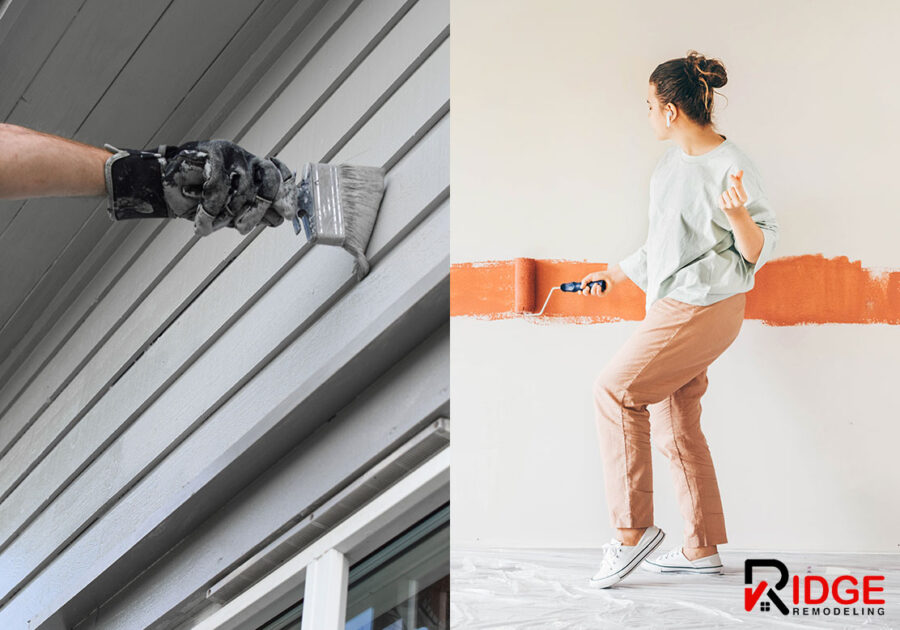There is a kind of paint for every surface. Each of them serves a different purpose. It is not the same to paint a car, a wood stair, or a metallic bridge railing. Every time you think of a new painting project it is necessary to know the difference between different types of paints to choose the right one. The first thing you need to know is the difference between interior paint and exterior paint.
Interior paints are made to resist staining, and allows you to clean it by scrubbing it. Exterior paints are made to resist heavy weather conditions and protect the walls from mildew and deterioration.
Exterior paints are designed to endure. To do so, chemical additives are mixed with the paint. If you use exterior paints in enclosed indoor areas, you may be exposed to unhealthy chemicals. If you use interior paints on the outside of your property, it simply won’t last long due to the lack of the heavy duty additives.
The chemistry of any paint illustrates the purpose it has. The basic components you should consider are pigments, solvents, additives, and resins.
Solvents (also known as liquids) are the compounds that make the paint “wet”. In some paints the solvent is water, as in latex paint and acrylic paint. In oil-based paints, such as alkyd paint, the solvent is a different chemical compound. Both interior and exterior paints can be water-based or oil-based.
Pigments are the colors.
Resins are the compounds that bound the pigment to the surface. Resins may be made of acrylic, epoxy or silicone. Thay are also known as binders.
Additives change the properties of the paint. They can make it easier to clean, or more resistant to mildew, or make the paint easier to apply.
Oil based paint is more resistant to dirt, while water based latex paint is more durable. This kind of paints handle humidity, temperature changes and outdoor factors better. Water based paint is preferred for interiors due to the lack of fumes, and the possibility to clean with soft methods.
Interior paints may be made of organic pigments. These pigments tend to fade, so exterior paints avoid their use to increase the duration of the paint job.
The resin used in exterior paint allows the walls to breathe, so moisture can escape through the paint, and it helps in the prevention of scuffing and smearing. Resins used in interior paints are more basic. This explains the difference in the cost between interior and exterior paint. Besides that, exterior paint resins can cause outgassing making them unsafe for interiors.
If all this seems too much,there are hybrid paints that are intended for both interior and exterior jobs, but any specialist will prefer to select an adequate paint depending on many factors, suchs as the area of the room or the cleaning method the walls will have.
Interior paint, according to federal guidelines, should contain the lowest possible levels of VOC (volatile organic compounds). These compounds are often used as solvents or liquids in the paint composition. Health problems associated with VOC are headache, dizziness, respiratory disease, liver disease or even cancer. Remember that these solvents evaporate when the paint dries, and the fumes can be rather harsh, so it’s something important to consider. For interiors always look for a paint with the lowest VOC levels.
A professional painter will always produce the best results:
-Work with the safest and more accurate methods for every surface and paint type
-Save money by choosing the right paint and the right quantity
-Perform in a technical manner from years of practice
-Save you lots of effort and time.
At Ridge we have been working for years to guarantee the best results in all types of Interior and Exterior painting Jobs.



0 Comments
Leave a comment